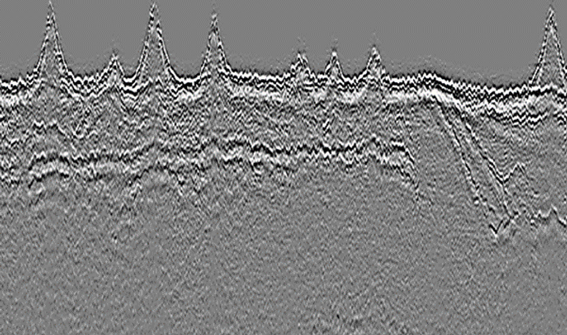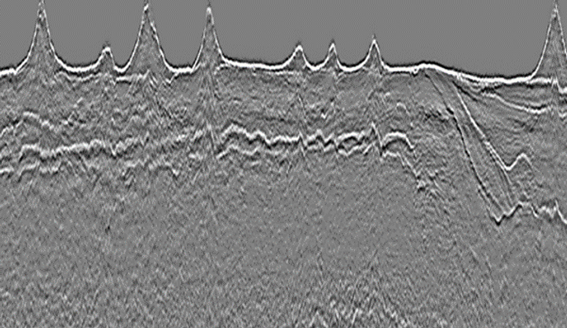The Erebus Floating Windfarm is the first technology demonstration site to be approved for development in the Celtic Sea. The 100MW site being developed by Blue Gem Wind, a Celtic Sea focused JV between Simply Blue Energy and TotalEnergies, will become one of the largest floating offshore projects in Europe upon completion and is the building block to establishing the Celtic Sea as a hub for Floating Wind developments.
As part of the site development, 2x single channel sparker surveys have been acquired in 2020 and 2021 across the rugged and varied seabed terrain and unforgiving seas off the Pembrokeshire Coast. This part of the UK is more technically challenging and complex when it comes to ultra-high resolution (UHR) seismic processing compared to the North Sea, and the acquired data suffered particularly from ghost and static artefacts. The RockWave objective was to improve the quality of these data to support cable routing and wind turbine / anchor design.
Original 2D seismic acquired for developer:

RockWave have been developing and refining workflows for all types of UHR data and amongst the many optimisations throughout this sequence, some of the key steps in overcoming the most problematic parts of the original dataset included:
- Application of deghosting methodology, which broadens the frequency bandwidth and provides higher resolution and a more accurate representation of the subsurface. Further enhancement is achieved by conversion of the data to zero phase, resulting in an interpreted horizon on the seismic representing the actual time of impedance contrast (and hence geological boundary) in the subsurface.
- Static corrections and re-datum of the seismic to the correct two-way travel time revealed shallow structures not previously visible and sharpened the seismic reflections to reveal finer geological details
- Noise attenuation and coherency enhancement to enable easier interpretation of primary events in the data.
RockWave reprocessed 2D seismic for improved cable routing and wind turbine / anchor design:

The resulting data were interpreted and incorporated into a site ground model by East Point Geo leading to improved delineation of glacial and post glacial sediments and foundation soil conditions.
The Crown Estate has recently progressed a further three test and demonstration sites to the next stages of appraisal and announced an ambition to deliver 4GW of floating wind in the Celtic Sea. The subsurface of the Celtic Sea is set to become a hot spot for survey and ground modelling where Blue Gem Wind have taken the lead in showing the value of optimised seismic processing.
Click here to find out more about how RockWave can support your offshore wind developments.
KeyFacts Energy Industry Directory: RockWave
 KEYFACT Energy
KEYFACT Energy